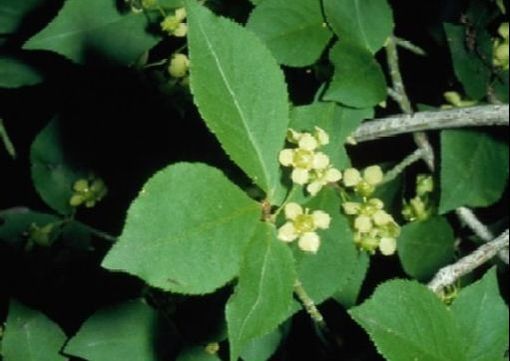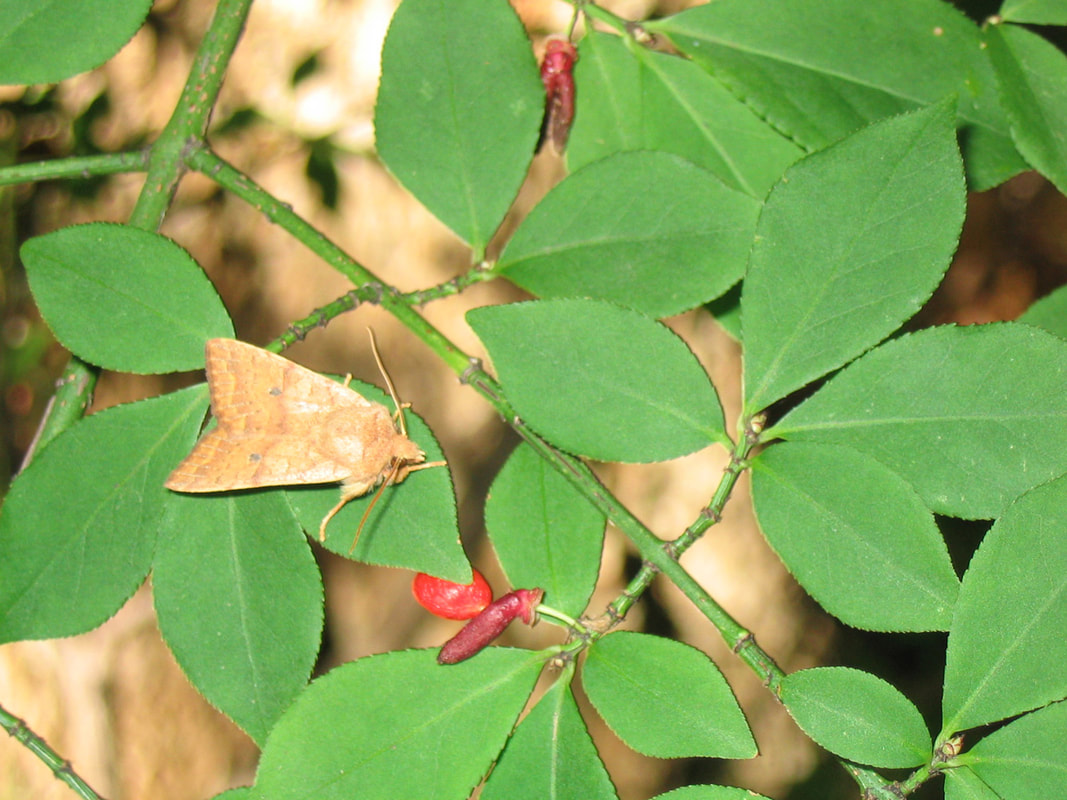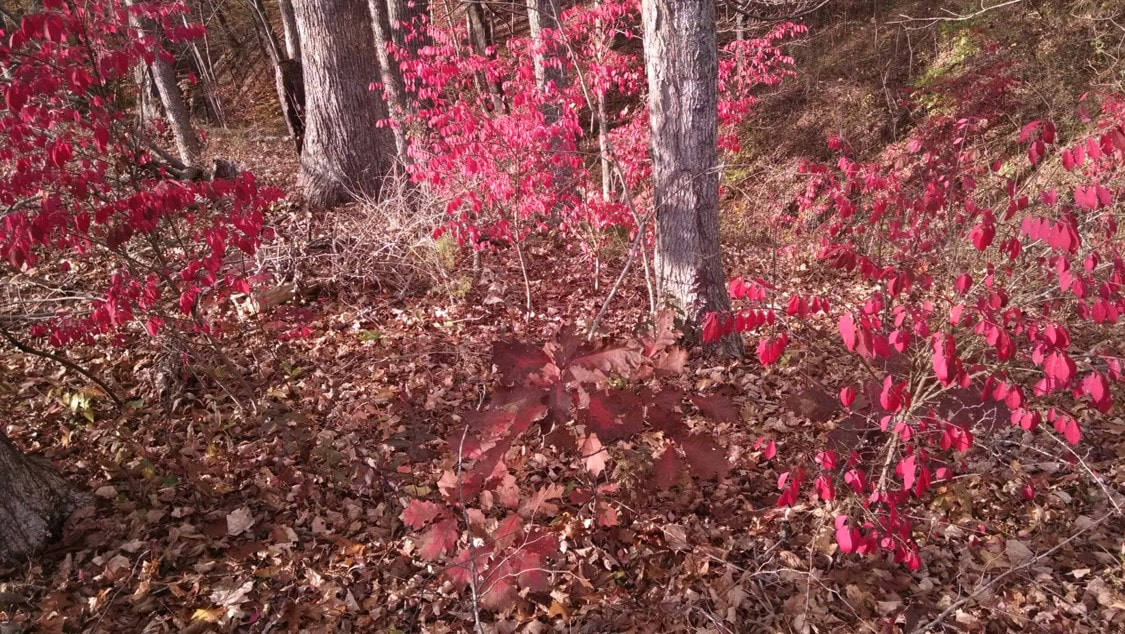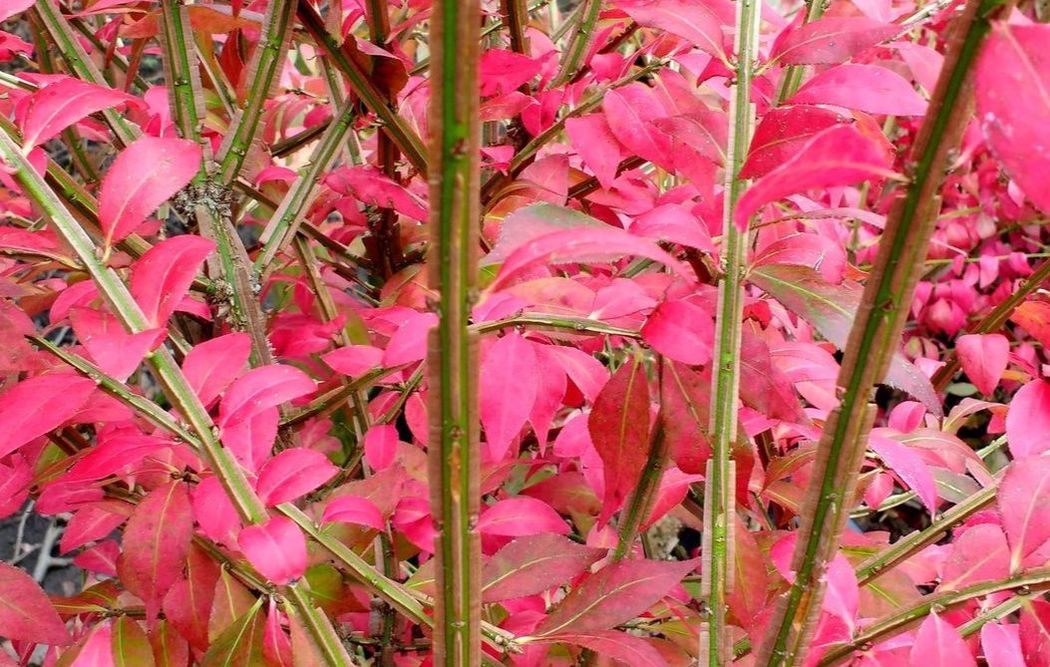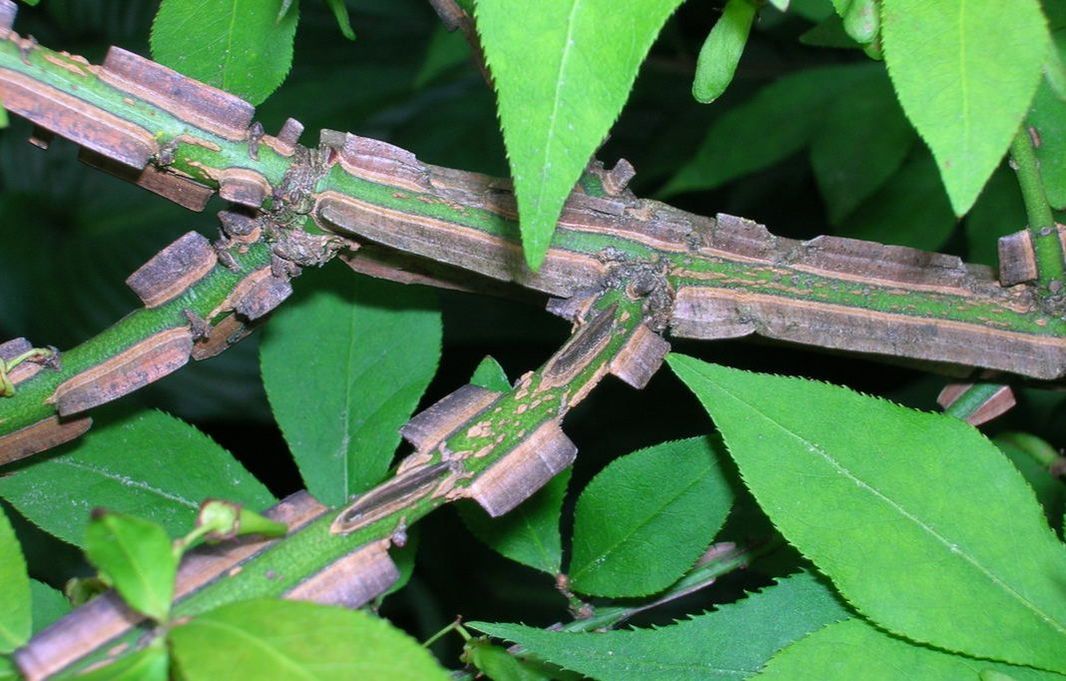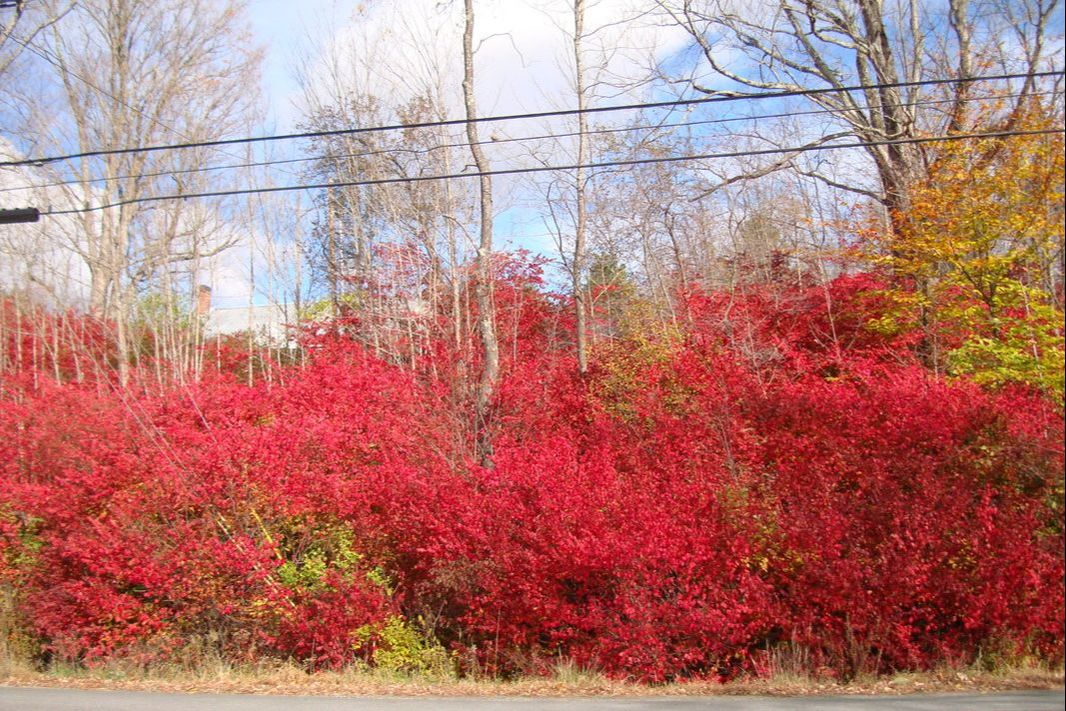Burning bush (Euonymus alatus)
|
Status: common near Bloomington, occasional through the rest of Monroe County Description: Deciduous shrub to 15-feet tall and wide; opposite leaves oval to obovate and finely toothed, 1-3 inches long and 1/2 to 1 1/4 inches wide, stalkless or nearly so; leaves turn bright red in fall, pink in shade; green to brown stems often have 2-4 prominent corky wings; small green flowers with 4 petals. Threat: Burning bush creates dense thickets in forest understories, displacing native plants. The amount of burning bush invading Monroe County forests is very clear in the fall, as in the picture below (taken in northwest Monroe County). |
What to Plant Instead
There are so many great alternatives to plant instead of burning bush. Click to learn more!
|
Burning Bush Video
Here's a brief educational video from Purdue University Extension about burning bush.
|
Fact Sheet
Click here for a fact sheet with more information on this invasive species, and how to control it.
|
